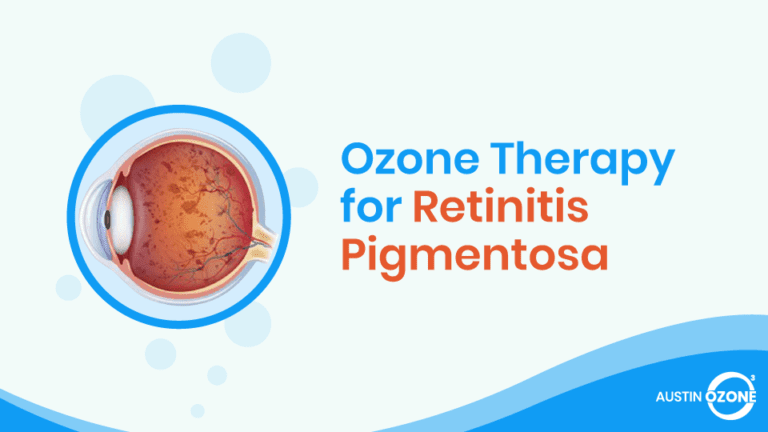Retinitis Pigmentosa5 is a collective term for a group of genetic disorders involving the cells in the retina.
Due to its nature, retinitis pigmentosa is considered rare. The disease is characterized by the loss of night vision, which can further progress to total blindness.
An Overview of Retinitis Pigmentosa
The retina is the thin tissue lining found in the backside of the eye, close to the optic nerve. The main function of the retina is to receive light and transform it into neural signals for the brain to recognize.
Since the retina plays an important role, any damage to it can be detrimental to your vision. If your eye cannot process or receive light, your brain will not be able to process the information.
Retinitis pigmentosa is a collective term for eye disorders that have to do with the retina. This genetic condition changes how your retina responds to light, making it difficult to see.
People with retinitis pigmentosa gradually lose their vision. The speed at which this happens depends on the type of retinitis pigmentosa they have.
What Causes Retinitis Pigmentosa?
Retinitis pigmentosa is a genetically-attributed disorder6, which means patients suffering from it have likely inherited it from their parents.
The disorder is caused by a mutation in the genes, which impedes the retinal cells’ capability to produce protein. To understand how retinitis is inherited, you need to understand the basic information about genes.
Genes are bundled chromosome structures. Every chromosome is passed from the parents to the child during conception. Each cell in the human body has 23 chromosomes – 22 autosomes that contain majority of the child’s traits and a sex (XY) chromosome, which determines the child’s gender.
Retinitis pigmentosa can be inherited in three different ways:
Autosomal Dominant Inheritance
In this pattern, one parent has a disorder-causing mutating gene that has a 50% probability of being passed on to any of their children.
Autosomal Recessive Inheritance
This pattern requires both parents to be carriers of the mutant gene. The probability of passing retinitis pigmentosa to a child in this pattern is 1 in 4 chances.
Even if the child somehow did not end up with retinitis pigmentosa, there is still a 50% chance that the child is also a carrier and can pass the mutated gene to the next generation.
X-linked Inheritance
In this inheritance pattern, only mothers carry the disease-causing gene. The mutated gene is carried through one of the mother’s X-chromosomes (females have two X chromosomes; males only have one).
This means that regardless of the child’s gender, he or she will have a 50% chance of inheriting retinitis pigmentosa.
Schedule an Ozone Therapy Session Today!
What Are the Symptoms of Retinitis Pigmentosa?
The retina is composed of cells called photoreceptors in the shape of rods and cones. The rods are located in the outer part of the retina, allowing a person to see in the dark or with dim light.
Cones, on the other hand, are located in the middle part of the retina and are responsible for enabling a person to see the fine details in their visual perspective.
During the early stages of retinitis pigmentosa, the rods begin to die. This makes people lose their night vision or ability to see when there is a lack of light. This eventually progresses to losing the peripheral vision.
As the rods break down, the cones start to disintegrate, too. This leads to the loss of central vision, which makes it hard for the patient to do detail-oriented tasks like reading or driving.
How to Diagnose Retinitis Pigmentosa
Retinitis pigmentosa often appears in childhood. If your child is having difficulty navigating in the dark or has trouble adjusting to the light, you might want to have their eyes checked out for this disorder.
Normally, an eye doctor can diagnose retinitis pigmentosa with the use of an ophthalmoscope; it enables them to get a clearer view of the retina. This would reveal any dark or abnormal deposits that may obstruct the photoreceptor of the retina.
Aside from an eye examination, the doctor can also use any of the following methods5:
Genetic Testing
As there are many forms of retinitis pigmentosa, it is sometimes recommended to take genetic testing to learn the exact nature of the disorder. In this method, the doctor will ask for a DNA sample for analysis.
Visual Field Testing
A visual field test will give the eye doctor an idea of the extent of the disorder. The test is conducted by making the patient watch a moving dot of light. The patient then pushes a button to signal if they see the light. This maps the patient’s visual field.
Electroretinogram (ERG)
An ERG uses a specialized equipment that can measure the electrical activity of the patient’s photoreceptors. A remarkable decrease in electrical activity means that the photoreceptors are not responding the way they should.
Is There Any Treatment for Retinitis Pigmentosa?
There is no single medical treatment for retinitis pigmentosa. There are over 100 genes that can mutate and cause the disorder. For this reason, genetic testing is important in planning a treatment plan that is right for you.
Also, as there are many forms of retinitis pigmentosa, not every form can be treated. To date, researchers are still conducting clinical studies1 to determine possible treatments for some forms of retinitis pigmentosa.
Some studies claim that increasing Vitamin A intake may help slow down the progression of retinitis pigmentosa.
Some studies claim that increasing Vitamin A intake may help slow down the progression of retinitis pigmentosa. However, an overdose may cause some serious side-effects, such as vision changes, bone pain, liver damage, and increased pressure in the brain.
Others recommend using eye drops and surgery as forms of treatment. ARGUS II is an artificial retina that can be implanted to replace your damaged one. Like any other medical procedure, though, surgeries come with a risk.
Still, eye doctors mostly recommend using low vision devices that can aid patients in maximizing their existing vision.
If you have retinitis pigmentosa in your family history, it is better to consult an expert before trying to conceive a child to be prepared for the possibility of passing the gene on to your children.
What Is Ozone Therapy?
As previously stated, heat acclimatization is just one of the many consequences of using ozone sauna therapy. It is a
Ozone therapy is an alternative treatment that has been extensively studied2 due to its therapeutic properties.
This procedure uses ozone, a gaseous substance known for its sharp smell and disinfecting abilities. Normally, ozone is regarded as a pollutant because it can irritate your eyes and lungs. Fortunately, advances in modern technology made it possible to generate and use ozone safely.
Ozone therapy has been used since the First World War4 because of its antibacterial, antiviral, and antifungal properties. However, the medical properties of ozone are not limited to these applications. It also has anti-inflammatory and hemodynamic properties, which positively impact the human body.
Medical ozone can be administered through a number of methods. It can be combined with blood, directly injected to the muscle or veins, or supplied through the ears, nose, rectum, or vagina. The dosage and frequency of the treatment is usually determined by a professional.
Ozone Therapy for Retinitis Pigmentosa
Researchers in Cuba1 have been tirelessly working to determine whether ozone therapy can be a viable treatment for retinitis pigmentosa.
According to their findings, ozone therapy through autohemotherapy (injection of ozone through the bloodstream) and rectal insufflation (pumping of ozone gas through the rectum) showed significant improvement in their subjects’ peripheral vision.
The results demonstrated 70% improvement in the visual field and 42% improvement in visual acuity.
Ozone therapy through autohemotherapy and rectal insufflation showed significant improvement in their subjects’ peripheral vision. The results demonstrated 70% improvement in the visual field and 42% improvement in visual acuity.
It was also revealed that their best results were achieved when patients undergo ozone therapy at least twice a year for 10 years. For this reason, Cuban experts have been recommending ozone therapy as a viable treatment option to cure retinitis pigmentosa.
The exact mechanism of how ozone therapy can help reverse the effects of retinitis pigmentosa is still under study. However, it is claimed that the detoxification properties2 of ozone play a large part in improving retinal functions. The procedure improves cell metabolism and blocks lipid peroxidation, which triggers retinitis pigmentosa.
Conclusion
Although further clinical studies and trials are needed, the results from the research conducted by Cuban scientists on the efficacy of ozone therapy in the treatment of retinitis pigmentosa are remarkable and must be taken into consideration.
Unlike other forms of treatment, ozone therapy has no known adverse effects and can deliver positive results.
If you are suffering from retinitis pigmentosa, you can ask your eye doctor about the possibility of trying ozone therapy as treatment for your condition.
Schedule an Appointment Today
References
- Copello, M., Menedez, S., Horrach, I., & Betancourt, J. (n.d.). TEN YEAR STUDY IN PATIENTS SUFFERING FROM RETINITIS PIGMENTOSA AND TREATED WITH REPEATED CYCLES OF OZONE THERAPY. Retrieved from https://www.ozonetherapiesgroup.com/ozone-research/2019/10/28/ten-year-study-in-patients-suffering-from-retinitis-pigmentosa-and-treated-with-repeated-cycles-of-ozone-therapy
- Cuban Heal Research. (2018, December 11). TREATMENT OF RETINITIS PIGMENTOSA IN CUBA. Retrieved from https://www.cubaheal.com/2018/12/11/treatment-of-retinitis-pigmentosa-in-cuba/
- Diaz-Luis, J., Menendez-Cepero, S., Macias-Abraham, C., & Fariñas-Rodríguez, L. (2018). Systemic Ozone Therapy by Rectal Insufflation for Immunoglobulin A Deficiency. MEDICC Review, 20(1), 29-35. https://doi.org/10.37757/MR2018.V20.N1.%207
- Lowe, M. (n.d.). Medical ozone part 2. Retrieved from https://www.faim.org/medical-ozone-part-2
- Nutrition House. (n.d.). Retinitis pigmentosa. Retrieved from https://www.nutritionhouse.com/Library/WellnessItem.aspx?ID=63994
- Persistence Market Research. (2021). Retinitis pigmentosa treatment & management market: Global industry trend analysis 2012 to 2017 and forecast 2017 – 2025. Retrieved from https://www.persistencemarketresearch.com/market-research/retinitis-pigmentosa-treatment-management-market.asp






